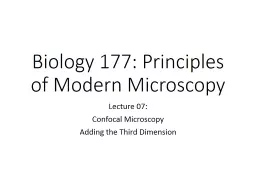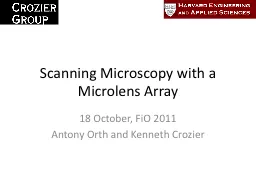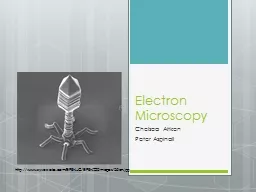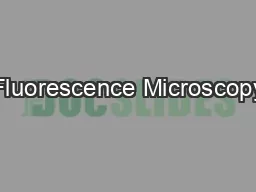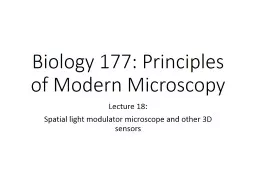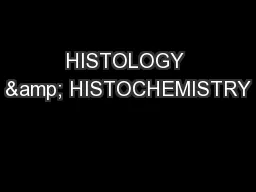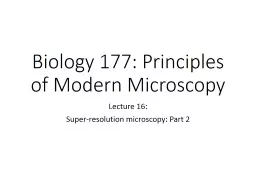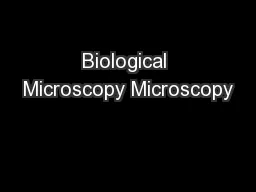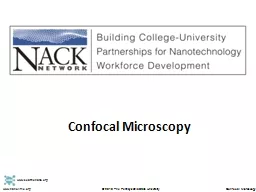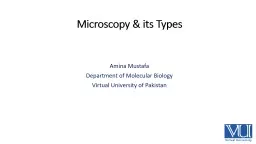PPT-Microscopy Explorations
Author : aaron | Published Date : 2017-10-16
Plants have tiny parts that do big things Have a closer look These bumps on clover roots are homes for b acteria These bumps are called root nodules They are
Presentation Embed Code
Download Presentation
Download Presentation The PPT/PDF document "Microscopy Explorations" is the property of its rightful owner. Permission is granted to download and print the materials on this website for personal, non-commercial use only, and to display it on your personal computer provided you do not modify the materials and that you retain all copyright notices contained in the materials. By downloading content from our website, you accept the terms of this agreement.
Microscopy Explorations: Transcript
Plants have tiny parts that do big things Have a closer look These bumps on clover roots are homes for b acteria These bumps are called root nodules They are made by bacteria that infect the root cells But these are good bacteria They take nitrogen from the air and turn it into fertilizer for the plant In return the plant roots provide food and a nice home for the bacteria. The corrected instrument a Philips CM200 FEG ST has an information limit of better than 013 nm and the spherical aberration can be varied within wide limits even to negative values The aberration measurement and the corrector c ontrol provide instru Lecture . 07: . Confocal Microscopy. Adding the Third Dimension. Lecture . 7: Confocal Microscopy. Optical Sectioning: adding the third dimension. Wide-field . Imaging. Point . Spread Function. Deconvolution. Microlens. Array. 18 October, . FiO. 2011. Antony Orth and Kenneth . Crozier. High Throughput Microscopy. 1. http://www.olympus.co.uk/microscopy/22_scan_R.htm#. High throughput fluorescence imaging by scanning sample under . Chelsea Aitken. Peter Aspinall. http://www.zyvexlabs.com/EIPBNuG/EIPBN%20images/05Ion.jpg. Intro to Electron Microscopy. Similar to optical microscopy except with electrons rather than photons. Used to image samples with a resolution of 10 Å. Chelsea Aitken. Peter Aspinall. Advantages Over Light Microscopy. Resolution of light microscopy limited by Rayleigh Criterion. If two objects cannot be seen as distinct structures, then they may be considered coincident in space. Lecture 18:. High speed microscopy, Part 2. High speed microscopy, Part . 2: Spatial . light modulator microscope and other 3D sensors. Making laser scanning confocal microscopes faster. Resonant scanner confocal. By. Professor Abdel-Majeed Safer. 1. Professor Abdel-Majeed Safer Histology & Histochemistry . Professor Abdel-Majeed Safer Histology & Histochemistry . 2. Chapter 1. What is HISTOLOGY ?. and Marine Sciences. Chapter 2. 39 slides. Ancient Uses and Explorations. Prehistory and the Rise of Seafaring. History doesn’t record who the first people were to explore the oceans, nor when. But archaeologists date . Lecture 16:. Super-resolution microscopy: Part . 2. Lecture 16: Super-resolution microscopy and TIRFM. Single molecule imaging. Total internal reflection fluorescence microscopy (TIRFM). Super-resolution techniques . Microscopy is the technical field using microscopes to view samples and objects that can not be seen without unaided eye (objects that are not within the resolution range of the normal eye). There are three well-known branches of microscopy: optical, electron and scanning probe microscopy.. 1Many different types of light microscopesare available each with their own strengths and limitationsA main tenant of good microscopy is to select the right tool microscope for the job at handPlease c Outline. Introduction. Optical Microscopy. Types of Optical Microscopes. Confocal Microscopy. Laser Scanning Confocal Microscopy. Examples. Optical Microscopy. Optical microscopy is the oldest type of microscope and uses visible light and a system of lenses to create an image of the sample. Amina Mustafa. Department of Molecular Biology. Virtual University of Pakistan. Invented by :. Antonie. van Leeuwenhoek. (Father of Microbiology). Microscopy. USES:. Diagnostics. Identification. Histology – Tissue analysis. (SEM) Electron Microscopy (SEM) and TEM Scanning electron microscopy is used for inspecting topographies of specimens at very high magnifications using a piece of equipment called the scanning electr
Download Document
Here is the link to download the presentation.
"Microscopy Explorations"The content belongs to its owner. You may download and print it for personal use, without modification, and keep all copyright notices. By downloading, you agree to these terms.
Related Documents


